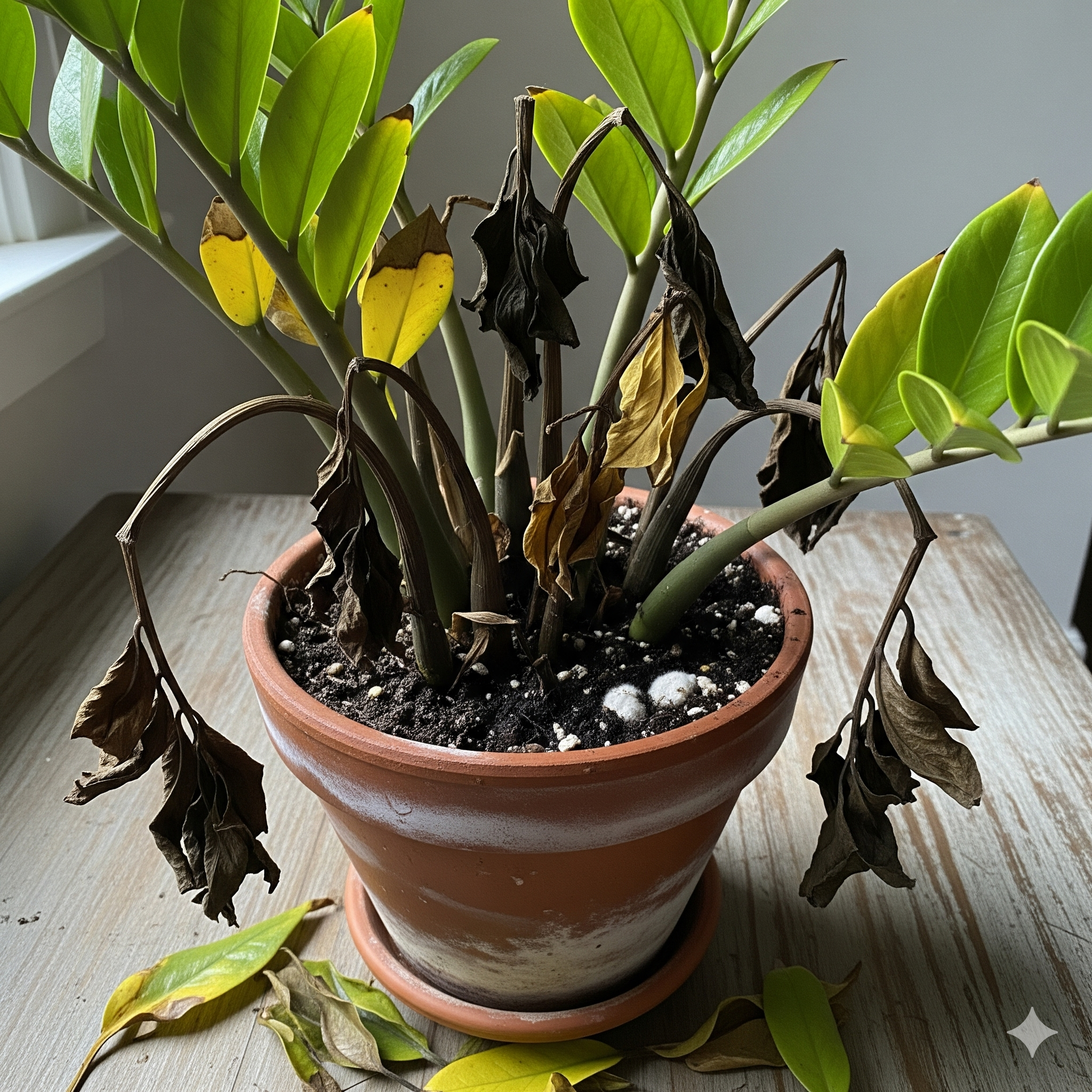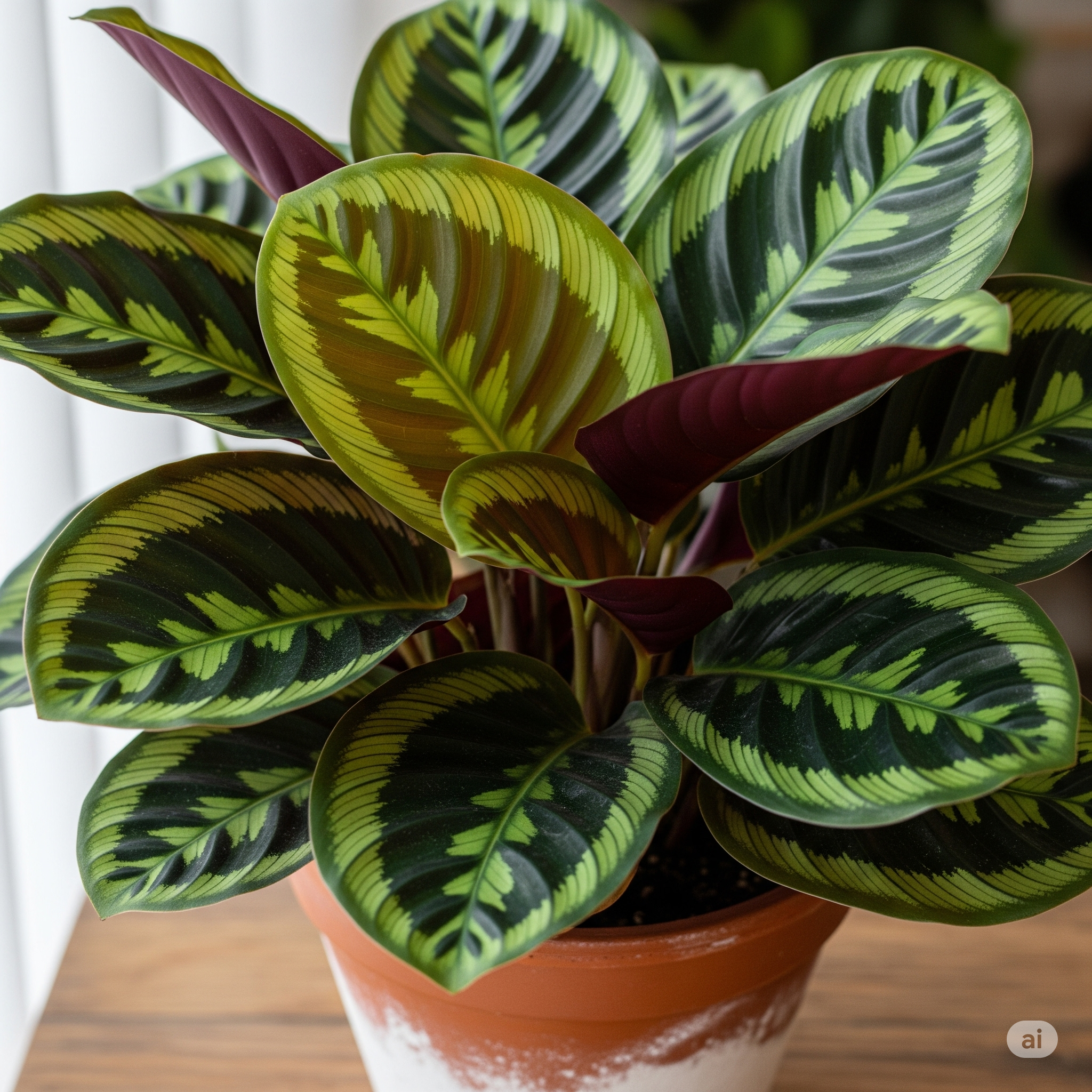Some links on this Website are affiliate links, meaning we may earn a commission if you make a purchase, at no additional cost to you. Please read our full Affiliate Disclosure for more details.
The ZZ plant (Zamioculcas zamiifolia) is often marketed as “unkillable.” With its glossy green leaves, drought resistance, and ability to thrive in low light, it has become one of the most popular indoor plants worldwide. But even though it’s resilient, it’s not invincible. Many plant owners discover this the hard way when their ZZ starts yellowing, drooping, or rotting unexpectedly.
The truth is, ZZ plants have their own set of needs. They’re hardy because they evolved to store water in their rhizomes, tolerate shade, and withstand periods of neglect. But when those natural adaptations are ignored or misunderstood, the plant can decline quickly. The good news? Most ZZ problems can be fixed if you act early and adjust care properly.
Let’s break down the seven most common mistakes that kill ZZ plants and the exact steps you can take to bring them back to health.
Factors That Can Cause You To Kill ZZ plants
1. Overwatering and Poor Drainage
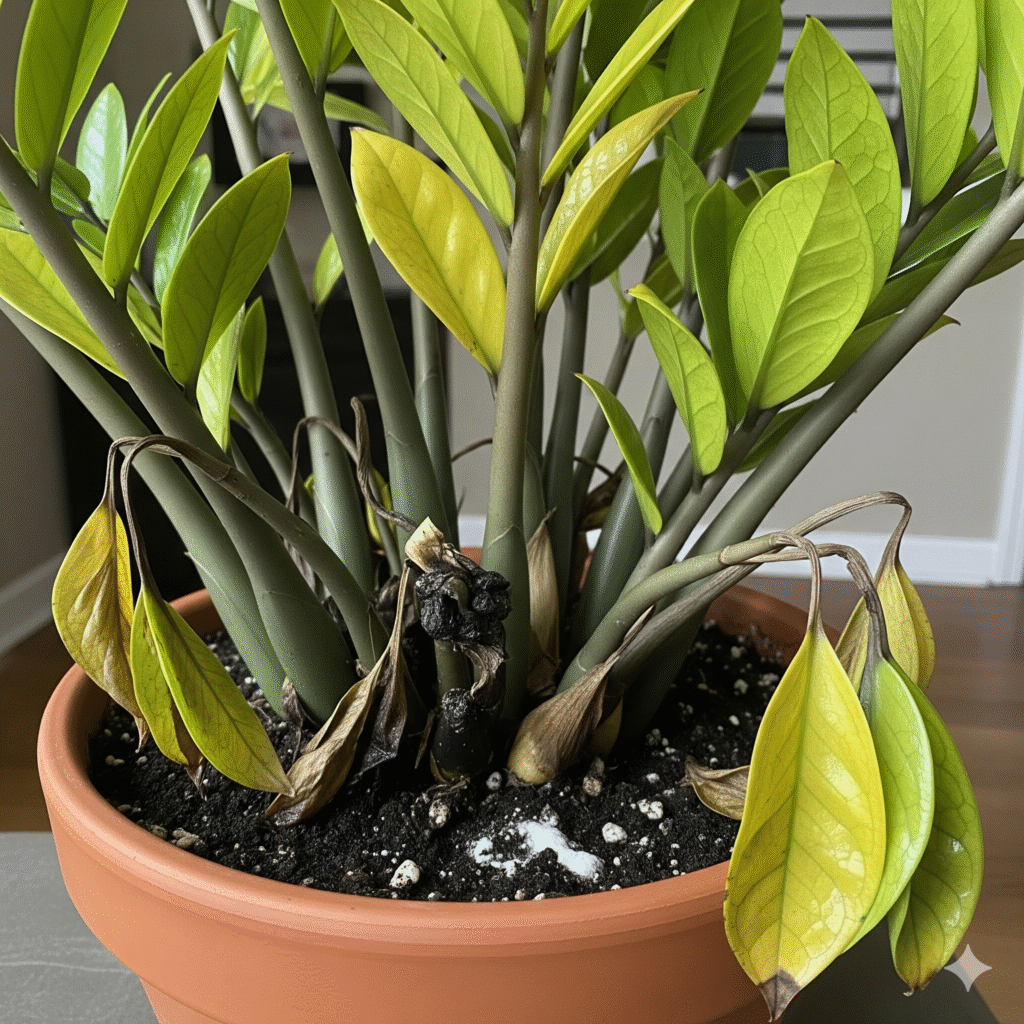
The single biggest way to kill ZZ plants is overwatering. They have thick rhizomes that store water, which means they don’t need frequent watering. When the soil stays soggy, those rhizomes and roots begin to rot. If your plant’s leaves are turning yellow, stems are drooping, or the soil smells musty, chances are it’s sitting in too much water.
To prevent this, always use a pot with drainage holes and a fast-draining mix such as cactus or succulent soil. Let the soil dry out almost completely before watering again. If root rot has already set in, remove the plant from its pot, cut away the mushy roots, and replant it in fresh soil. From there, water sparingly until you see signs of recovery.
2. Too Little or Too Much Light
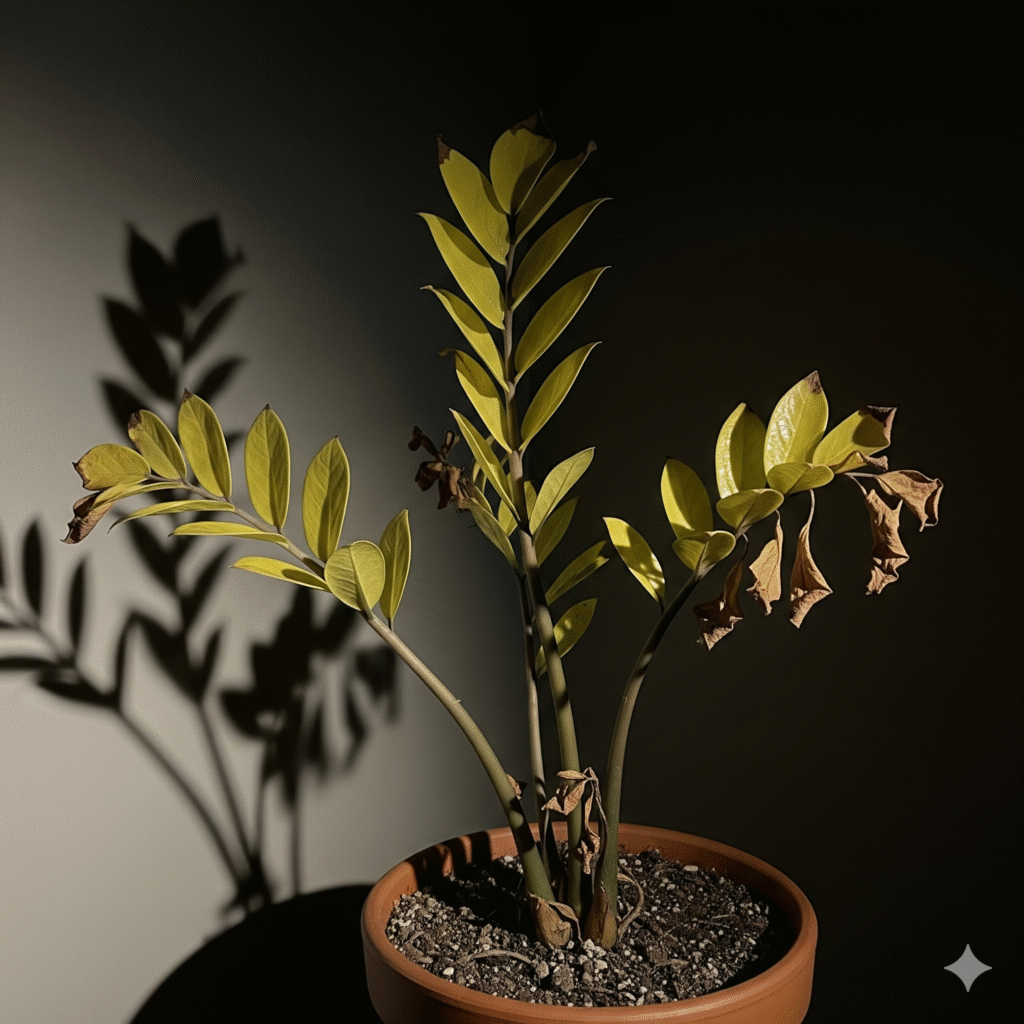
ZZ plants can survive in low light, but “surviving” isn’t the same as thriving. In dim corners, they often grow tall and leggy with weak stems. On the other end of the spectrum, placing them in harsh direct sunlight scorches their leaves, leaving behind crispy brown spots.
The best light for the plant is bright but indirect. A spot near an east-facing window works well. If your plant is stretched out and floppy, move it closer to a light source. If it has sunburn, trim the damaged leaves and relocate it to a gentler spot. You can also rotate the pot every few weeks so it grows evenly on all sides.
3. Wrong Soil or Pot Size
Soil makes or breaks a ZZ plant. Dense, moisture-holding soil suffocates the roots and keeps them constantly wet, while oversized pots encourage excess water retention. On the other hand, a pot that’s too small restricts growth and stresses the plant.
For the healthiest roots, use a well-aerated soil mix and choose a pot that is only one or two inches larger than the current root ball. If your ZZ looks like it’s struggling in heavy, compacted soil, repot it into a looser mix with added perlite or sand. This will improve drainage and airflow around the roots.
4. Temperature Stress
ZZ plants prefer a stable, moderate environment. They do poorly in extremes, especially cold drafts or sudden temperature swings. Anything below 60°F (15°C) can cause the leaves to yellow and fall off, while prolonged heat near radiators or vents dries the plant out.
To keep your plant comfortable, place it somewhere with consistent room temperature, ideally between 65–80°F (18–27°C). If it has already been exposed to cold or heat damage, move it to a stable environment and remove the most damaged leaves. With time, new healthy shoots should emerge.
Why Are Your Calathea Dottie Leaves Turning Yellow?
5. Overfertilizing
Because ZZ plants grow slowly, they don’t need much fertilizer. Many owners make the mistake of feeding them heavily, which causes salts to build up in the soil. This can burn the roots and leave the leaves discolored.
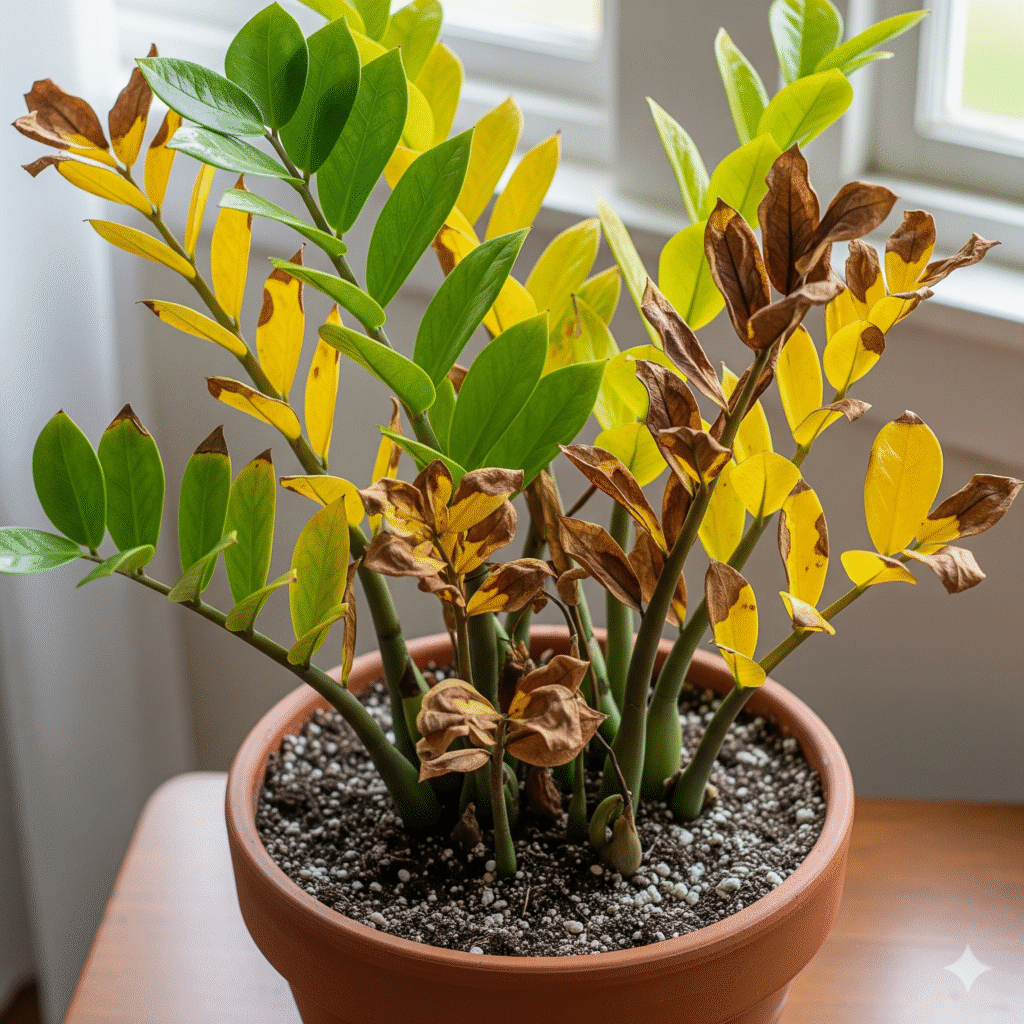
The safe approach is to fertilize lightly during spring and summer, then stop in fall and winter when growth naturally slows down. If you’ve overdone it, flush the soil with clean water to wash away excess salts or replace the top layer of soil. Hold off on fertilizing again until your plant looks healthy and resumes new growth.
Can Succulents Survive In An Air Conditioned Room?
6. Pests and Diseases
While ZZ plants aren’t magnetically attractive to pests, they can still fall victim to mealybugs, scale, or spider mites. Left untreated, these insects sap energy from the plant and spread quickly. In soggy conditions, fungal root rot is also a serious threat.
Check your plant regularly, especially under the leaves and along the stems. At the first sign of pests, isolate the plant and treat it with insecticidal soap or neem oil. For root rot, follow the same steps as with overwatering: cut away the infected roots and repot in clean, dry soil. Early action is the key to saving your plant.
How To Aerate The Soil In A Potted Plant
7. Repotting Mistakes
Repotting ZZ plants too often, or handling them roughly, can do more harm than good. Their rhizomes are sensitive, and burying them too deeply or breaking them during transplanting sets back growth.
Repot only when the plant is clearly root-bound, usually every two or three years. When you do, choose a pot just slightly larger than the current one. Handle the rhizomes carefully and keep them at the same depth as before. If your ZZ plant is stressed from rough repotting, focus on providing stable conditions and give it time to bounce back.
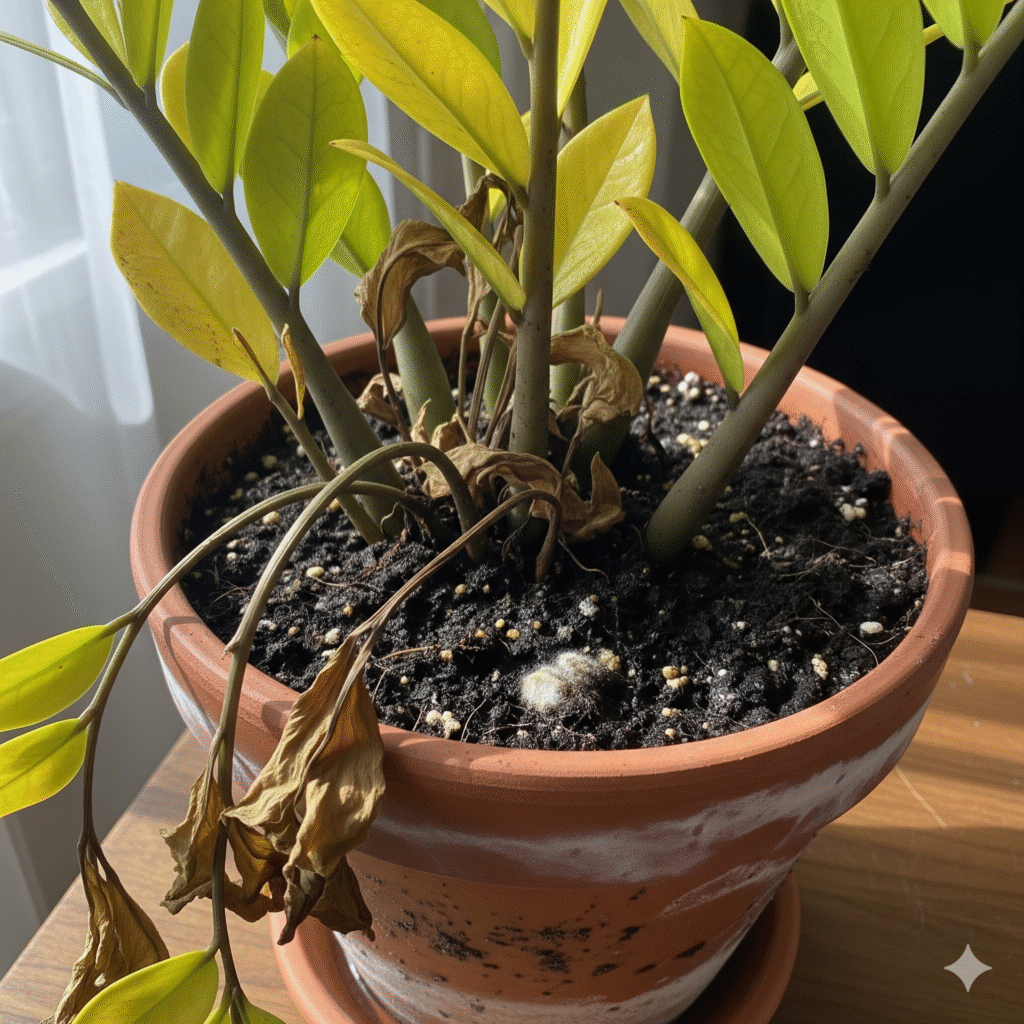
Bringing a ZZ Plant Back to Life
Reviving a struggling ZZ plant comes down to a few basic steps: identify the problem, correct the environment, remove any dead or damaged parts, and give it time. Don’t expect instant results since they grow slowly, so recovery may take weeks or even months. But with patience and the right care, even a plant that looks half-dead can surprise you with new shoots.
If your ZZ plant is on the brink, don’t give up yet. Follow this recovery checklist:
- Inspect the roots. Gently remove the plant from its pot and check for rot, pests, or overcrowding.
- Trim and clean. Remove any rotten roots, yellowed leaves, or pest-infested parts.
- Repot if necessary. Use fresh, airy soil and a pot with good drainage.
- Reset watering. Let the soil dry before watering. Stick to “less is more.”
- Stabilize conditions. Place in bright, indirect light with steady temperatures.
- Be patient. ZZ plants recover slowly. Watch for new shoots, they’re the best sign of life returning.
Conclusion
The ZZ plant may be resilient, but it’s not indestructible. Overwatering, poor soil, lighting mistakes, temperature stress, overfeeding, pests, and rough repotting are the most common killers. The encouraging part is that almost every problem is preventable and most are reversible with the right care.
Think of it as a patient companion: it won’t demand much, but it does expect you to respect its natural rhythms. Give it proper drainage, moderate light, and the occasional drink, and it will reward you with lush, glossy leaves for years. And if you do slip up? Don’t panic. With a little attention, most ZZ plants can bounce back from the brink.
